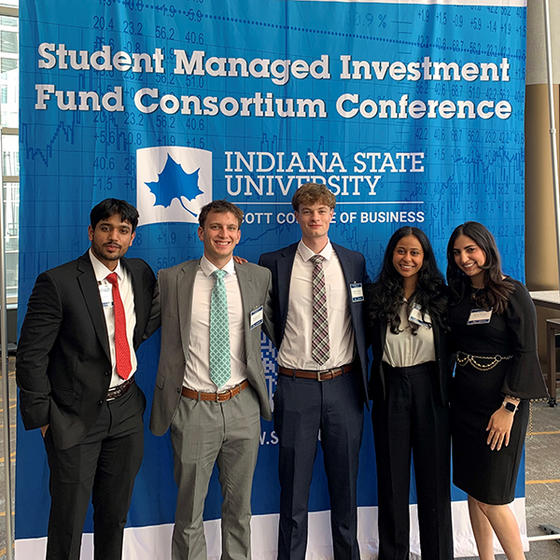In This Story
George Mason University Master of Science in Finance students have the rare opportunity to use their budding analytical skills to solve some of the mysteries of today’s financial markets. Moreover, their faculty-supervised research projects can land their names in the pages of The Wall Street Journal.
To date, these projects have spawned nearly 40 WSJ articles, not to mention dozens of write-ups in outlets such as MarketWatch, The Conversation, and the CFA Institute blog. They have also received television coverage on CNN and NewsNation.

As Costello College of Business finance professor Derek Horstmeyer tells it, the process started taking shape organically. “I had started writing for the CFA and The Wall Street Journal. In my talks with my students, some of them revealed they had research interests. It just kind of took off from there—I would bring it up in class and offer to supervise a research project that would last about a week.”
Student researchers are mainly recruited from Horstmeyer’s Montano Student Managed Investment Fund (SMIF) class, a hands-on exercise in security analysis and portfolio construction that serves as a capstone to the MS in finance degree.
While many student research projects originate with questions suggested by the students themselves, Horstmeyer helps the student teams devise their scope and direction.
“They might say, for example, that they’re interested in crypto. So I’ll show them previous articles on crypto and we kind of develop a new idea from there,” Horstmeyer says.
By the time they get to SMIF, students are usually comfortable getting their hands dirty with data. Finding the appropriate data-set for the question they’ve posed, however, can be a challenge. That’s another area where Horstmeyer’s support becomes critical. “The big bottleneck is they just don’t know where the data is,” he says. “We as faculty have access to these private databases. So I’ll guide them or set up the data.”
Horstmeyer also introduces the student teams to the best methods for parsing the data, while leaving students enough leeway to conduct independent follow-up analyses if needed.
Of the dozens of projects completed thus far, there are a few that, for Horstmeyer, typify the process at its best. For example, finance students Matthew Rickard and Camila Marín Builes investigated how stock-market trends fare once they have been familiarized enough to warrant a nickname. Among the eight named trends included in the study were FAANG (Facebook, Amazon, Apple, Netflix and Google), and “The Magnificent Seven” (Nvidia, Tesla, Meta, Apple, Alphabet, Amazon, and Microsoft).
“We did an extensive Google search to find the biggest named trends. Then we used the Wayback Machine to figure out when the trend was first coined, like the exact date. We did all sorts of tests to determine what kind of abnormal returns you can expect if you stick with that trend,” Horstmeyer explains.
The students found that newly christened trends experience an extended honeymoon period of about 12 months, amounting to an average of 13 percentage points in excess returns. But in their second year, trends start to go stale, underperforming the S&P 500 by an average of two points.
The Wall Street Journal published Horstmeyer’s article “Once a Hot Stock-Market Trend Has a Name, Its Best Days Are Likely Past”—published under his byline with the student researchers mentioned by name early on—in March 2024.
Horstmeyer says that participating in these projects helps students hone skills and techniques that enhance their careers and give them a competitive edge in the job market. “I get employers reaching out and saying, ‘I saw this line item on a candidate’s resume saying they did some pretty high-level data analysis for you. Is it true?’ They’re kind of surprised the student contributed to the CFA or a Wall Street Journal article.”
Melvin Jonathan Reyes Echeverria, who completed his MS in finance degree in May 2024, says, “I assisted Professor Horstmeyer with data analysis for the WSJ and the experience was amazing…I was able to leverage everything that I was taught in my MS in finance classes. It was a privilege to be published and something that was unexpected to receive at George Mason.”
